The conservation of a 7ft long ichthyosaur skeleton at Wells and Mendip Museum.
This Ichthyosaur was found in the Blue Lias deposits in a quarry at Keinton Mandeville, Somerset, and was donated to the Wells and Mendip Museum by the City of Bristol Museum & Art Gallery.
The skeleton (see below) is 211cm long from the tip of the snout to the broken end of the tail (much of the distal end of the tail is missing).
The specimen sits prepared proud of the rock within half a dozen or so slabs of matrix, and is surrounded by slabs of a similar matrix that do not fit perfectly
and when it was mounted and framed the joins were filled with a coarse mortar and plaster. This was often quite a broad join, between slabs of slightly different
heights.
 In many places cracks had developed along the edges of the mortar and plaster gap fills which had become loose and some pieces of mortar or plaster had fallen
away. There was also an excessive amount of blue-grey paint spread over the matrix. There was a crack running through the skull and this and other cracks could be
from stresses caused when the specimen was last moved. None of the cracks seriously affect the mechanical integrity of the specimen but
they required cosmetic attention, and some of the loose gap fills needed to be replaced. The mortar had generally not been painted out either consistently or very well.
Also, there were a few splashes of paint and varnish that needed to be removed, and excess varnish from around the phalanges of the left forefin.
From external appearances, there was no evidence that the cracks were due to slabs shifting due to pyrite decay within the specimen
(there was no characteristic odour, for example) though there was one very small patch of pyrite oxidation at the head of some ribs,
right next to the vertebrae about 24 cm posterior of the very rear of the skull.
In many places cracks had developed along the edges of the mortar and plaster gap fills which had become loose and some pieces of mortar or plaster had fallen
away. There was also an excessive amount of blue-grey paint spread over the matrix. There was a crack running through the skull and this and other cracks could be
from stresses caused when the specimen was last moved. None of the cracks seriously affect the mechanical integrity of the specimen but
they required cosmetic attention, and some of the loose gap fills needed to be replaced. The mortar had generally not been painted out either consistently or very well.
Also, there were a few splashes of paint and varnish that needed to be removed, and excess varnish from around the phalanges of the left forefin.
From external appearances, there was no evidence that the cracks were due to slabs shifting due to pyrite decay within the specimen
(there was no characteristic odour, for example) though there was one very small patch of pyrite oxidation at the head of some ribs,
right next to the vertebrae about 24 cm posterior of the very rear of the skull.
To address these issues, after cleaning the specimen a few small areas of matrix and mortar that were in danger
of becoming detached required consolidating and adhering behind with Paraloid B72 in acetone (a reversible methacrylate co-polymer);
loose mortar and plaster was removed; some cracks were filled with plaster of paris after the sides were treated with a small dilute amount of PVA glue;
this plaster and some existing poorly painted mortar was painted to match their surrounding matrix;
the pyrite decay products were removed and the area treated with Parloid B72 consolidant;
and some old glue, varnish and paint was removed with scalpels and/or acetone.
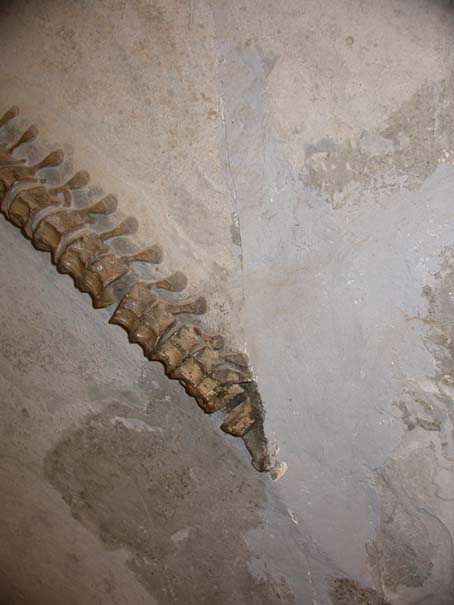
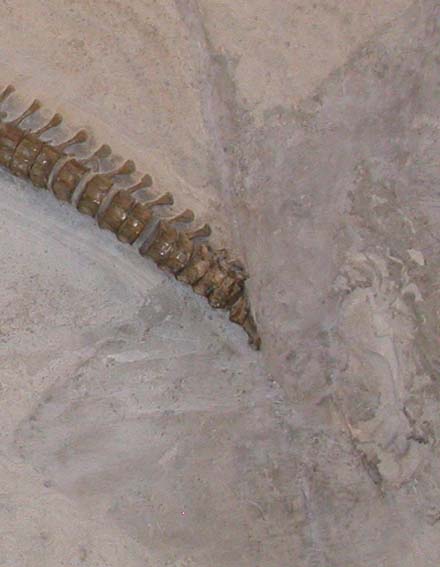


From left to right above: The crack along the end of the tail, including plaster flaking away and paint excessively and poorly applied on the matrix;
the same area after work; three old dribbles or splashes of consolidant that needed to be removed; and excessive and sloppily-applied consolidant around the phalanges that needed to be tidied-up.


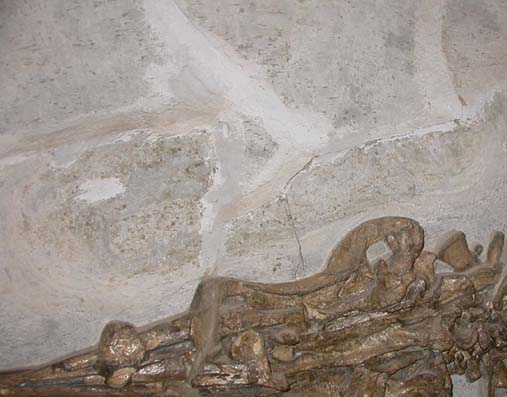
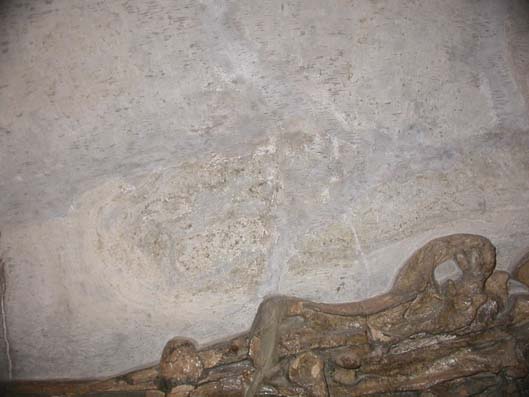
From left to right above: Pyrite decay was indicated by the small yellow patch between the ribs and the vertebrae; the same area cleaned of the by-products of decay, and the excessive consolidant on the ribs toned down; an unsightly area above the skull before work: area above the skull after work.



From left to right above: a crack with loose plaster removed, and an indication of how excessively the paint was applied as it is covering the matrix either side
of the break; a poorly consolidated area under the ribs; and the same area after work.
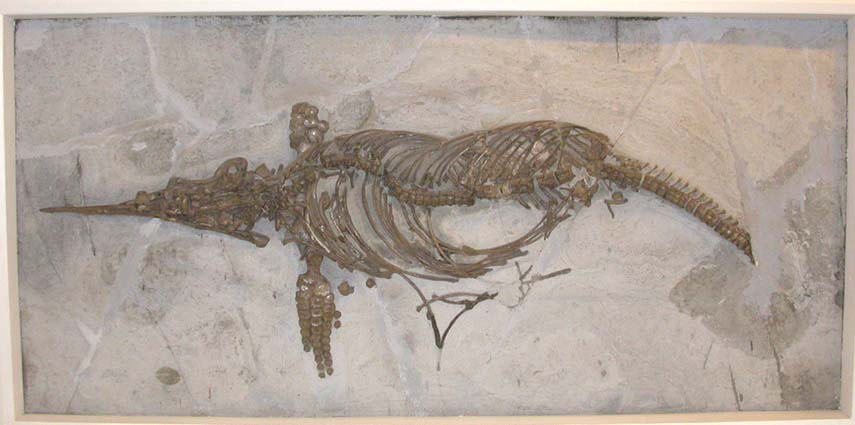
Above: the specimen before work. Below: the specimen after work

Wells and Mendip Museum acknowledges the assistance of The Curry Fund of the Geologists'
Association in the conservation of this specimen.
For more details about what we can do for you, or for a quote, please
contact:
enquiries@natural-history-conservation.com
We
are members of the United Kingdom Institute for Conservation of Historic and
Artistic Works